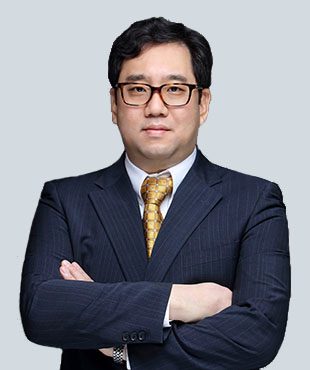Find out more about our latest publications
Characteristics of Korea’s MA Market and Analysis of the Determinant of MA Performance
Research Papers 17-07 Mar. 31, 2017
- Research Topic Capital MarketsCorporate Finance
Mergers and acquisitions (M&A) is an increasingly important issue in Korea, as economic growth slows down and effective restructuring of Korean companies becomes more urgent. But while there are many suggestions on how to vitalize Korea’s M&A market, there is a general lack of data and research to underpin such discussions. This paper aims to provide a long-term overview and key features of Korea’s M&A market to aid such dialogue. In addition, the understudied topic of Korea’s M&A financial advisory industry, an important component of facilitating M&As, is examined, along with an empirical analysis on the determinants of M&A performance.
This study uses Korean M&A deal data from Bloomberg, covering the period from 2000 to 2015. Korea’s M&A market size has grown from a meagre 13.1 trillion won in 2000 to 96.2 trillion won in 2015, more than a 7 times increase. The number of M&A deals has also grown from 102 deals in 2000 to 493 deals in 2015. However, in terms of size, much of the growth of Korea’s M&A market has come in the past 2~3 years, driven by a spike in the size of a handful of mega-deals.
M&A market size to GDP in 2015 for Korea(6.5%) was lower than that of the US(10.2%) but on par with the UK(6.5%) and higher than that of Japan(4.3%). However, this was a result of 2~3 mega-deals in 2015, and Korea’s average M&A market size to GDP for the 2000~2015 period as a whole is only 2.9%. Thus, it remains to be seen whether the recent growth spurt will persist going forward. Also, the average M&A deal size in Korea remains very small. Between 2000~2015, the average M&A size was only 94.7 billion won, though it increased to 195.1 billion won in 2015, it is still relatively small.
In terms of cross-border M&As, deal value increased from 4.1 trillion won in 2000 to 14.3 trillion won in 2015, an increase of 3.5 times. Between 2000~2015, the share of cross-border deal value as a share of total Korean M&As was 32.0%. Average cross-border deal size, during this period, however, is small at under 100 billion won.
In terms of industry characteristics, M&As in Korea are predominantly pursued by companies in manufacturing, reflecting the structure of Korea’s economy. Acquirers in the manufacturing industry accounted for 36.2% of deal volume between 2000~2015. However, in terms of deal value, financial services industry at 33.3% of deal value was ahead of manufacturing, reflecting industry restructuring mega-deals in banking, credit-card, insurance and securities industry following the 1997 Asian Financial Crisis and 2003 credit card crisis in Korea.
Lastly, targets of M&As in Korea are predominantly of unlisted companies. The share of deals where the target company is unlisted and acquirer is listed accounts for 65.9% of deal volume between 2000 and 2015. By comparison, deals where the acquirer and target are both listed companies are only 6.4% of deal volume, one of the reasons why the average deal size of Korean M&A is small. It also implies more M&As involving listed target companies are needed to bring about meaningful restructuring of Korean companies.
The major players in the Korean M&A financial advisory market can be grouped into foreign investment banks, Korean securities firms and accounting firms. The structure of the financial advisory market appears to be bifurcated, with few but profitable mega-deals dominated by foreign investment banks and the large number of small M&A deals served mostly by accounting firms. Korean securities firms are stuck in the middle, competing with foreign investment banks for the same type of large corporate clients, while competing with accounting firms on small to medium sized deals.
Empirical analysis looks at whether the unbalanced competitive structure of the M&A financial advisory industry is due to performance difference between the different types of financial advisor, or whether other characteristics, either of acquiring firms or the structure of the M&A deals explain performance differences. M&A performance is measured using a three day window cumulative abnormal return (CAR), based on the event study methodology.
The main findings of the empirical analysis indicate that there is no direct effect of financial advisory choice in terms of acquirer’s CAR when controlling for acquirer and deal characteristics. Dummy variables on financial advisor type are found to be statistically insignificant in the regression results. On the other hand, statistically significant explanatory variables influencing CAR are asset size and return on assets of the acquiring firm, relative deal size, stock price run-up and stock payment dummy variable. Thus, it cannot be claimed that the reason foreign investment banks dominate Korea’s profitable mega-deal market is due to superior deal performance delivery. Rather, there seem to be other un-included or un-measured differences across financial advisor types which lead to acquiring firms tending to favor certain advisor types. To determining what those influencing factors are remains an important topic for future research.
The relative small size of Korea’s M&A market, despite the recent substantial growth, remains an important challenge that needs to be solved. Relatedly, ways to increase the participation of Korean securities firms in M&A financial advisory roles need to be found. M&A advisory is an important component of advancing the investment banking capabilities of securities firm, which in turn assists in the effective growth and restructuring Korean companies. Towards this end, both policy measures, along with own efforts on the part of Korea securities companies are needed.
